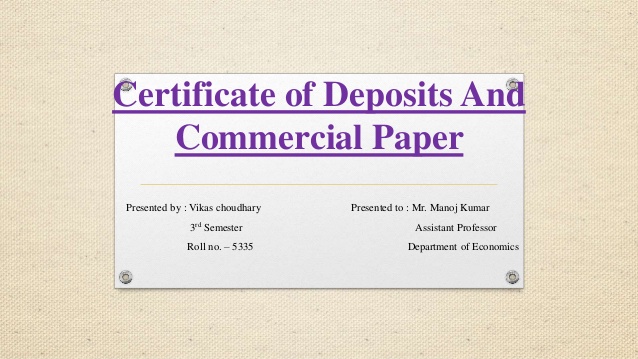Contents
With inflation concerns and QE taper announcement, the exuberance around India’s growth could cool off. The indicator is often called the ‘Buffet Indicator’, as ace investor Warren Buffet popularised the use of this gauge. An aggregate market capitalisation above 100 per cent of the country’s GDP hints at stock markets trading with stretched valuations. A value below 100 per cent suggests that the stock market is undervalued and may be due for a recovery. For decades, the Fed balance sheet has been used to predict changes in economic cycles. The expansion and contraction of the Fed’s balance sheet can certainly influence the economy and the consumption of individuals and corporates, which consequently influence the stock market.
A more useful approach, in Sharma’s view, is to watch the earnings cycle for businesses and comparing it to the historical trend. On this front, a global recovery will support revenue and profit growth across regions and sectors. “We in India may have to closely watch P/E (price-to-earnings, PEG (PE/growth ratio), PBV (price-to-book value) ratios on an absolute and relative basis considering the unique advantages India offers to investors,” he said. The Buffet indicator is an important indicator that shows whether the market valuation is in sync with the economic reality or not. The Modified Predicted Return line indicates the expected, or predicted annualized return for the next eight years if the current TMC / (GDP + Total Assets of Central Bank) ratio reverts to its recent 10 years mean of 78.89%. The Predicted Return line indicates the expected, or predicted annualized return for the next eight years if the current TMC / GDP ratio reverts to its recent 10 years mean of 88.38%.

For example, it compares the previous quarter’s GDP to the stock market’s value today. GDP also excludes overseas income, whereas US companies’ market caps reflect the value of both their domestic and international operations. As mentioned above, the S&P 500 captures approximately 80% of available market capitalization.
This is consistent with the interpretation of the Buffett Indicator, which makes sense since it’s essentially the same ratio, but for an entire country instead of for just one company. Reproduction of news articles, photos, videos or any other content in whole or in part in any form or medium without express writtern permission of moneycontrol.com is prohibited. “Fundamentally , we see Nifty 50’s fair forward PE to be in the 21x-23x range. As far as momentum is concerned, Nifty is now at levels where incremental growth can only be driven by earnings growth, with multiple expansion being highly unlikely,” he said. “Along with ROE’ increasing trend, an accelerating trend growth in earnings is important for valuation premium to sustain and increase.
Data Sources
Thus, we can say that stock market outlook in March was closer to its bottom. Thus the Buffett indicator gives investors an early warning before bottoming of the markets. What is “The Buffett indicator” and why does it work for most global economies, but not India? The indicator shows whether or not market valuations are in sync with economic reality.
On the other hand, companies trading below 0.5x (or 50%) are considered to be undervalued. Thus, It is a measure of the total value of all publicly traded stock in a country, divided by the country’s Gross Domestic Product . The ratio has become buffett indicator india today known as the Buffett Indicator in recent years, after the investor Warren Buffett popularized its use. Warren Buffett believes that Market Cap to GDP Ratio is one of the best measure of where valuations of the market stand at any given moment.
As we discussed above, over thelong term, corporate earnings grow as fast as the economy itself. In the last 30 years among top world economies, China had the most optimal % for Buffett indicator, which never touched 1. The Chinese economy grew faster than the Total Market Cap of all Chinese listed companies for EVERY single year, for the last 30 years! With a flood of unicorns in recent times that will eventually harvest via IPOs and the economic rebound post covid in next 3 years bull market.. Based on the newly introduced total market cap over GDP plus Total Assets of Central Bank ratio, the Stock Market is Modestly Overvalued.
Buffett Indicator Tool Usage
There isn’t,” Powell told a press conference in Washington on Wednesday after officials lifted the target for the benchmark federal funds rate to a range of 3% to 3.25%. “While history is a great guide, it’s never gospel,” said Sam Stovall, chief investment strategist at CFRA Research. Why would you spend this much time and money trying to get out of the deal, and be this annoying about it, and then just unconditionally surrender two weeks before trial? One possibility is that it became increasingly obvious to Musk that he was going to lose the trial, and that didn’t seem fun, so he seized the initiative (?) by surrendering instead. 3 If this did go to trial he’d have to testify , his text messages with his friends have become public and more might come out, and the whole thing would be more distracting, unpleasant and embarrassing than he really wanted.

If we look at a particular business, the value of the business is determined by how much money this business can make. The growth in the value of the business comes from the growth of the earnings of the business growth. This growth in the business value is reflected as the price appreciation of the company stock if the market recognizes the value, which it does, eventually.
Buffett Indicator: Is the Stock Market Overpriced?
It has a market capitalization of more than $660 billion, making it the eighth biggest company in the world. In the first month of the calendar year 2021, barring IT, Capital Goods and Auto sectors, most of the key sectors such as metals, healthcare, bankex, FMCG, among others ended January in the negative territory. Anand Rathi Financial Services in its report stated that Nifty 50 is trading at around 36.6x its trailing 12-month price to earnings ratio while its five-year historical average price to earnings ratio stands at around 23.7x.
- Simply put, the so-called Buffett Indicator measures the total value of all publicly traded stocks in a market divided by that economy’s GDP.
- Therefore, if a company pays out dividends while still growing earnings, the dividend is an additional return for the shareholders besides the appreciation of the business value.
- Profits make up much of Saudi Arabia’s GDP since its economy depends on the low-cost high-profit oil industry.
- Due to current legal and regulatory requirements, United States citizens or residents are currently unable to open a trading office with us.
Thus, we can say that currently the market is trading at euphoric valuations, on strong optimism for future growth outlook. As described above, the Buffett indicator is calculated by dividing the total market cap of all publicly traded firms and the US GDP. To get the total market cap, the index uses the Wilshire 5000 index. It simply looks at the market capitalization of all companies public in the United States and compares them with the GDP.
What is Market Cap to GDP Ratio (Buffett Indicator) | Latest India Number?
Strong Recovery of Markets is evident from the current all-time high index levels. From Dalal Street to Wall Street, Bull run continues on the bourses. All major Global Indices are trading at Life-time high levels currently. However, after the Coronavirus outbreak in China, Italy, South Korea, United States, the overall sentiments of Foreign Investors got affected adversely due a number of uncertainties across global economic outlook. Heavy sell-off by FIIs in Indian Equity market was seen since last few weeks (February-20 & March-20). Below chart shows the monthly movement of India’s Market Cap to GDP Ratio.
Current Market Valuation
Interest rate hikes by global central banks and winding down of stimulus are sentiment dampeners. Access to cheap liquidity had boosted stock markets even at the peak of the pandemic. All eyes are now on https://1investing.in/ the December quarter corporate earnings of India Inc. Even here, analysts caution of an uneven recovery, especially on operating margins, as some companies are able to hike prices faster than others.
This time, tightening monetary policy and worries about an economic slowdown cloud the outlook. Market participants are still contending with the Federal Reserve’s aggressive rate-raising campaign aimed at bringing down persistently hot inflation. Investors expect corporate earnings to weaken as the business environment gets tougher into the year end. It has been unfortunate for investors who entered the market after the late 1990s. Since that time, the market has nearly always been overvalued, only dropping to fairly valued since the declines that began in 2008. Since Oct. 2008, for the first time in 15 years, the market has been positioned for meaningful positive returns.
In short, if the Buffett Indicator is too high, it means that the companies are not producing enough to be worth their valuations on the stock market. History & experts say whenever this critical ratio of TMC to GDP has crossed 1, markets corrected due to overvaluation. Like in India in 2007 it touched ~149% and 2017 as well leading to correction in market valuations. The long term average market cap to GDP ratio for India has been 79%, which is way above the long-term average where 60% of the equities are trading at a premium to their historical averages. The only two occasions when the ratio was below the long-term average were in FY 2009 (55%) and in FY 2020 (56%). Additionally, the ratio has been trending higher over a long period of time and therefore, many investors question what a reasonable average ratio should be.
This lowers the return that the factor earns and thus its share of GDP. Periods of above average profits as a share of GDP tend to be followed by periods of below average profits. The factors of production are in constant competition to increase their rewards and their share of the overall pie. The returns for each factor depend on the prevailing socio-economic conditions, and this share keeps changing as the background conditions evolve. GDP, meanwhile, is the monetary value of all final goods and services produced in a country in a given period of time, usually a year. So hypothetically, if every economic activity in the country were corporatized, GDP would basically reflect the aggregate annual turnover of all the companies.
A positive sentiment has been built in the market due to expected increase in profitability of Indian corporates. Also, Roll-back of Super-Rich tax to revive economic growth and Government’s PSU Divestment drive, FPIs have been buying in Indian equity segment. Thus, if we compare with the historical average market cap to GDP ratio of 75. Thus, we can say that current market outlook is noticeably overvalued as compared with historical average. In March 2020, the Indian stock market seemed to be closer to the bottom of current correction phase.